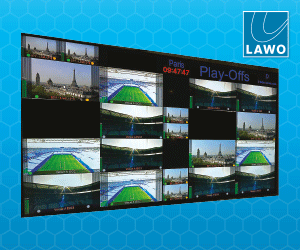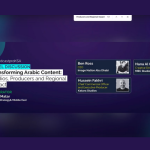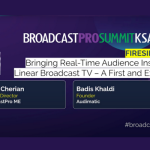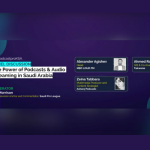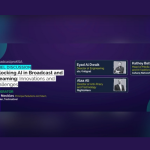At the recent BroadcastPro ME summit, MENA media chiefs discussed key topics including changes in advertising strategies, the evolving SVOD market, the role of GCC regulators in media, the rise of AI, the impact of data on content acquisition, and the competition between regional and global streaming players. We bring you the highlights.
Even as digital platforms drive growth and video dominates a fragmented space, industry leaders are turning to more technology-driven solutions, partnerships and adaptable business models to achieve efficiencies that ensure long-term returns. In the MENA region, frontrunners are navigating transformative changes and setting realistic horizons for success.
This shift in strategy was explored during an interactive session moderated by Karim Sarkis, Partner at Strategy&, with a distinguished panel consisting of Bassil bin Abdullah Al Mouallimi, Chief Strategy Officer at SRMG; Elie Habib, CEO of OSN+; HE Mohamed Al Mulla, Group CEO of Dubai Media; and Roman Shimansky, CEO of Yango Play.
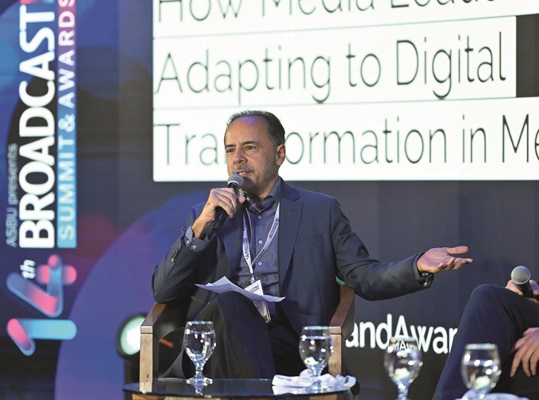
Market dynamics have set the panel on a journey of reinvention – a public service broadcaster modifying revenue-generating strategies, another embarking on an audio-video streaming merger, a third leading a shift from traditional to digital, and the fourth building a super app. While audiences don’t multiply in the real world, their outlook remains robust, a clear sign of the industry’s resilience.
Asserting that reinvention is not merely coincidental but in fact a necessity, Sarkis drove the panel to re-examine and review some of their strategies. With younger audiences engaging on newer apps and technology, staying connected is important as disruptors, began Roman Shimansky, CEO of Yango Play. “In terms of local content we are striving to be the strongest in the region, and when we launched our super app in the Middle East last year, the approach was to stay relevant by bringing cool new local content that people can enjoy.”
The merger of technology and audience content preferences within a multi-territory region paves the way for numerous opportunities in the sector. While building a product from scratch is extremely challenging, it is rewarding to watch the subscriber base grow and to realise that the region offers opportunities for those who take risks.

“Anghami was born a tech company and is the first of its kind in the region,” said Elie Habib, CEO, OSN+. “After merging with OSN+, we completely revamped the platform. Anghami has access to a wealth of data on user behaviour in the region, allowing us to understand whether customers prefer an all-in-one solution, whether we should complement other services and more. We’re planning to build on these insights, putting the customer first, leveraging our content library and executing mutually beneficial strategies.”
In the pursuit of more effective adaptation strategies and in response to fluctuating consumer habits, public broadcasters have revisited their advertising revenue models.
“We have moved to a digital-centric mindset,” said Mohamed Al Mulla, Group CEO of Dubai Media. “Another important parameter for us was reviewing our position in the ecosystem and value chain, undertaking new initiatives, and not depending on a single revenue stream.
“We recently launched Dubai Studios to boost content, create IPs and, most importantly, build partnerships beyond the standard ones we have.”
Dubai Media has also launched Dubai Events, where live TV shows like X Factor, broadcast through both linear TV and streaming platforms, will include a live, in-person experience. “During DSF 2025, X Factor will not just be seen as a TV format but also as an on-the-ground activation experience,” said Al Mulla.
Through these initiatives, Dubai Media aims to expand its presence and create additional avenues for revenue.
For companies deeply rooted in traditional print, finding supplementary revenue streams seems to be the natural way forward. As owners of legacy media and its means of distribution, the decentralisation of distribution has required a shift in the way companies work and function.
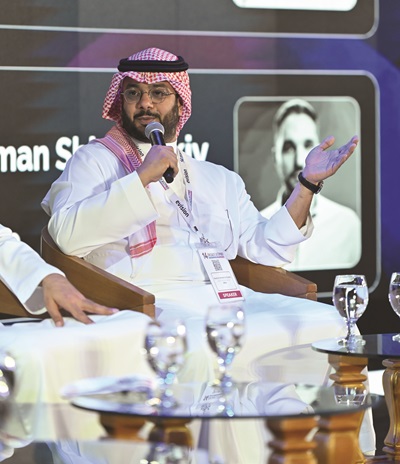
“Content is the focus now and we are competing for attention with everyone that has an account on social media,” remarked Bassil bin Abdullah Al Mouallimi, Chief Strategy Officer at SRMG. “That really transforms everything – the whole process of creating content, the technology and systems used to the talent you have, and policies. It is a different industry than it was 10 years ago, altering two interconnected features, advertising revenue and subscription models.”
With growth in revenue, reach and engagement rising from remodelled pathways towards profitability, companies have been placing shorter timelines for accomplishing target audience goals. “Our growth has been significant; we see it in the numbers, in terms of unearthing the value that a legacy company has which was buried and archived. Suddenly it’s valued at tens of millions of dollars if you use generative AI properly, so we are unearthing that treasure trove,” said Al Mouallimi.
Today, local platforms compete against international giants as consumers flock to a load of content breaking in for attention. In this regard, local players have the upper hand as they thrive on Arabic content, have a higher segment of sports content viewers, which is fundamental to the region, and have bundling capabilities.
“International players need local support, and the value balance must be clearly demonstrated. The shift from classical advertising revenue to an SVOD or consumer-funded platform may not fully offset the overall cost of the business. The key to navigating this challenge lies in the partnerships we build, which must be focused on creativity,” said Al Mulla. “We view our objectives realistically and aim to achieve them within the next five years.”
To transform operational strategies as everything becomes quicker and faster, it is imperative for companies to test, learn, adapt and listen to data, said Shimansky. “This approach allows us to create something that customers will genuinely enjoy, instead of relying on estimated guesses.
“We are working to transform the perception of the subscription business by offering a significant share of content for free over the internet. From the consumer’s perspective, the subscription represents collective funding for the future of great content that can entertain everyone. We believe we are four to five years away from the point where this shift will gain significant momentum.”
As businesses navigate various strategies to increase income, ad-supported models are essential but insufficient for achieving profitability. Advertising alone is not enough; a subscription base must also be part of the equation, said Al Mulla.
“The consumer will pay if you offer premium content or live events. We don’t want to lose advertising revenue or subscription revenue – our goal is to generate income from both. There will come a day when the consumer ends up paying for the ad embedded in the content. Our challenge lies in creating content with innovative ad placements that the consumer welcomes without noticing it is a paid ad.”
Current advertisements mirror what happens on TV, but the next set of advertisements will be inserted via Gen AI within the actual TV shows, which is possibly the future of content consumption, said Habib.
“By leaving room for advertisers to be engaged and mindful of the price for the consumer, revenue is made from the ecosystem. We’ve been in a freemium model in music where we make money on subscription and advertisement. But we have also launched an events wing that handles events related to artists and a production outfit that partners with artists to produce their music, as well as design ads for brands associated with them.”
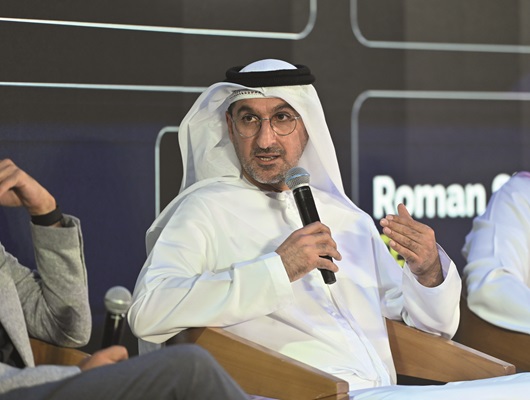
Although global streamers try to increase subscription in the MENA, local players have the advantage of local roots and connectivity.
“When we started creating a network, we wanted to tie up with the telcos because it was essential for our growth and in the massive advantage they have with something as simple as getting people to pay an operator they trust. Localisation is not simply about writing from right to left – it is about having a foot on the ground and creating content for people in the region,” said Habib. “Anghami is the only big music player that has created content. And based on the heap of data we have, we believe we understand the region better than other creators who have simply distributed content.”
Anghami is currently focused on creating video originals, with OSN+ launching its first Original miniseries The Fashionista in January.
Knowing the customer better and aligning with partners are both key to defining whether regional or international players are successful. “For all platforms that operate globally, the Middle East is another region to source revenue, so everything goes back to the earlier point about having a deeper connection with the region to emerge winners,” said Shimansky.
Growing a customer base is not easy, and while big organisations have an advantage playing to worldwide audiences, they have challenges of their own. “They can spend, they can impress, but the game is to sustain,” said Al Mulla. “These players need secondary markets, and in effect they will need to partner with someone strong on the ground. And telecom operators are not going to agree to normal rates; they will carry substantial bundled rates.”
Sustainability, however, is all about content and less about distribution. “If you don’t have the content that sits on a distribution platform, you’re not going to get eyeballs. Arabic content that is produced globally is around 1.5%. That industry needs to grow and develop. From scriptwriters to producers, post-production and everything around, the ecosystem needs to exist prior to us saying whether our distribution platform is going to work,” said Al Mouallimi.
Room for growth opens the possibility for consolidations, although not all players are driven by this need. “It is important to partner in order to be impactful,” said Al Mulla.
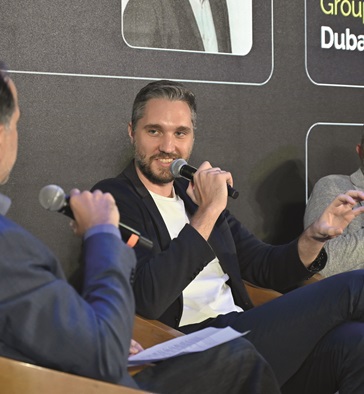
“Sometimes, companies don’t want to sell their content or IPs for various reasons, such as maintaining control over audiences with whom they have a direct affinity. Still, doing it alone is challenging, and you need someone like us to activate the ecosystem rather than compete. Our assets are not for sale, but we will play a vital role in energising the creative industry and adding value.”
As part of these efforts, Dubai Media recently partnered with the International Emmy Awards to host a judging session for the awards in Dubai. “We recently signed a five-year partnership agreement with the International Emmys wherein Dubai Studios will be part of the World Television Festival and the annual International Emmy Awards to be held in New York from 2025 to 2029.
“We also plan to bring the Academy Day soon to Dubai. We expect to see some leading studios, content creators, producers, directors from across the world come to Dubai for a four-day knowledge and culture sharing experience. We want to create access for Arabic content in the international market and take our stories to a global audience,” stated Al Mulla.
Acquisitions are a strategy pursued by some companies when it makes commercial sense. “Market diversification fosters healthy competition, but strategic acquisitions are still an important tool,” said Al Mouallimi. “Since acquiring 51% of Thmanyah three years ago, it has become the largest Arabic podcast globally, creating mutual benefits for both parties.”
With streaming profitability dependent on monetisation standards implemented by platforms, data insights reveal that people prefer watching shorter series. “From the time-spent perspective, short-form is popular and an indication of how long-form content will be produced in the future, in terms of editing and engaging audiences from the first episode,” said Shimansky.
Audience data is important but not a guarantor of content success. Data-driven organisations are mindful of that when building algorithms, said Habib.
“We can mine data to see whether a song will grow and become successful from ingestion, and the same can be done to video, but ultimately whatever you project is based around the content. Secondly, it is about how it reaches the audience – are we delivering it on the right platform? Are we distributing it in a way to reach the intended audience?”
Data is at the very centre of Yango Play, said Shimansky. “It’s in our culture, and the beauty of our industry is that there’s room for magic when it comes to content. It’s the spark in a story that touches you, but there’s no real code that exists to what works. Data simply allows that storytelling to be done efficiently – the genre, who should be cast and the marketing, which is well-tested against the data.”
 Data, alongside Gen AI, channels analytics, content recommendations and subtitling into post-production and beyond. AI offers an improved version of user trends and patterns, comprehends tasks faster, detects inconsistencies or incoherences. The idea is to think deeper and create something tailored to industry needs. It understands storylines and can easily rewrite or dub, as is being done with a lot of Turkish content that is Arabised to cater to the nuances of a Saudi, Syrian or Lebanese audience.
Data, alongside Gen AI, channels analytics, content recommendations and subtitling into post-production and beyond. AI offers an improved version of user trends and patterns, comprehends tasks faster, detects inconsistencies or incoherences. The idea is to think deeper and create something tailored to industry needs. It understands storylines and can easily rewrite or dub, as is being done with a lot of Turkish content that is Arabised to cater to the nuances of a Saudi, Syrian or Lebanese audience.
Present-day examples of AI-created content show strains of human touch. “While it gives complete answers when you navigate it towards a specific subject matter, it still requires that human touch, but that will go away in time,” said Al Mouallimi.
The extent of its scope and usability will be determined by how companies apply it. “Human ambition is unlimited and as long we have the ability to create, AI will warrant that exploration,” said Habib.
In sports, especially, machine learning has been applied to map games and provide instant highlights or personalised performances immediately after a match. “It is really about value generation,” said Al Mulla. “AI is only as good as the programmer, and going back to the point about limitless human ambition – we remain at the centre of what we create.”
Backed by bolder initiatives and AI-powered enhancements at the forefront of technology, the future will be about steering investment towards a common goal of increasing base. It will be about believing in content, shaping it and distributing it, and keeping an ear to the ground to build something uniquely innovative to the region. Risk and disruption will keep the industry abuzz, and as regional players secure firmer agendas, it will be a foothold for them to gain traction.


